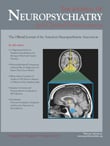Improving Phonological Dyslexia Using Electrical Stimulation in the Articulatory System
To the Editor: Dyslexia is a disability characterized by difficulty with reading a text. This disorder includes at least two prominent subtypes; surface dyslexia (individuals cannot correctly utter the irregular words) and phonological dyslexia (individuals cannot correctly utter nonwords) 1 , 2 ; the latter is more common. 1
Phonological dyslexia is diagnosed in individuals who cannot use the alphabetic system (learning the speech sounds that are related to letters), so they cannot correctly utter nonwords. Indeed, patients have problems making connections between sounds and alphabetic symbols. 3 This reading disorder might be related to different neuropsychological or neurobiological pathologies. 2 , 3 Many different theories have attempted to explain this kind of dyslexia, one of which is the motor-articulatory feedback theory. 3
According to the motor-articulatory feedback theory, awareness of the positions and movements of the articulatory system (lip, tongue, and jaw) would allow normal individuals to parse a word into its component phonemes. In phonological dyslexia, patients are not aware of these positions and movements and are unable to utter a specific word. If a patient could be made aware of positions and movements of the articulation system, this confliction might probably be improved.
Nonspeech oral motor exercises attempt to facilitate range of motion, develop muscle control, and improve the awareness of articulators. 4 These clinical exercises usually include hot, cold, and vibration stimulations to the muscles involved in speech. Although these exercises increase the strength of oral muscles, they have a poor effect on awareness of articulators.
In rehabilitation engineering, using electrical stimulation for recovering sensory perception had superior results. For example, using cutaneous electrical stimulation for 3 weeks significantly improved the skin sensation in some muscles of the chronic stroke. 5 According to the results of this effort, and many others focused on awareness recovery by electrical stimulation, bound electrical stimulations seem to have more effect on awareness of articulators in phonological dyslexia cases.
Based on the abovementioned points, we hypothesize that bounded electrical stimulations could be more useful than other common nonspeech oral motor exercises for recovering the awareness of the articulatory system in phonological dyslexia. However, experimental research is necessary for validation of this process.
1. Castles A, Coltheart M: Varieties of developmental dyslexia. Cognition 1993; 47:149–180Google Scholar
2. Rapcsak SZ, Beeson PM, Henry ML, et al: Phonological dyslexia and dysgraphia: cognitive mechanisms and neural substrates. Cortex 2009; 45:575–591Google Scholar
3. Heilman KM, Voeller K, Alexander AW: Developmental dyslexia: a motor-articulatory feedback hypothesis. Ann Neurol 1996; 39:407–412Google Scholar
4. Ruscello DM: Oral motor treatment issues related to children with developmental speech sound disorders. Language, Speech, and Hearing Services in Schools 2008; 39:380–391Google Scholar
5. Peurala SH, Pitkänen K, Sivenius J, et al: Cutaneous electrical stimulation may enhance sensorimotor recovery in chronic stroke. Clin Rehabil 2002; 16:709–716Google Scholar



